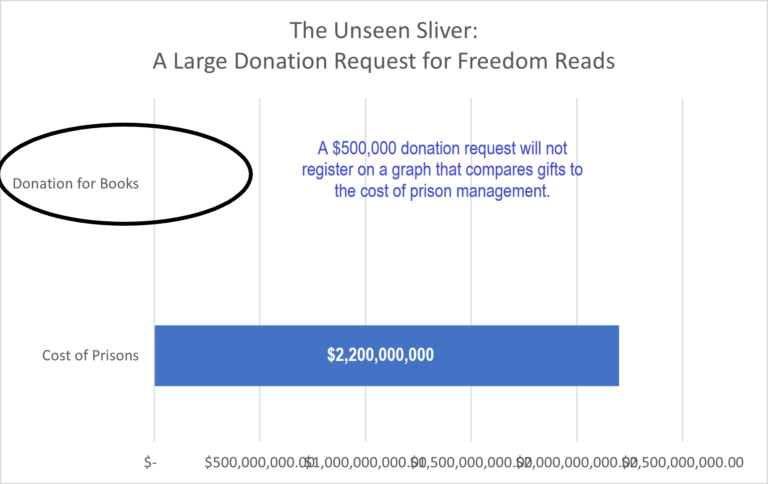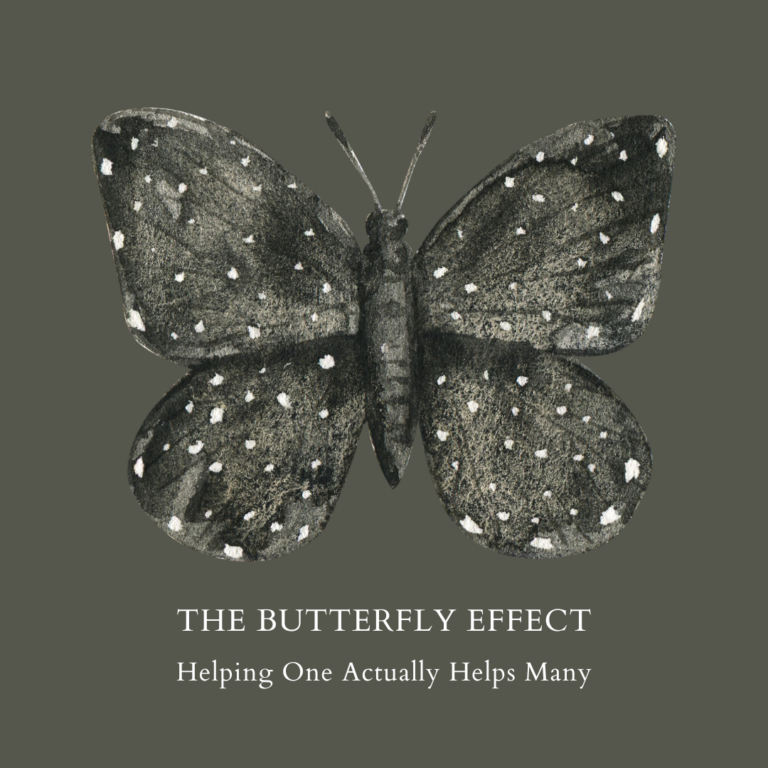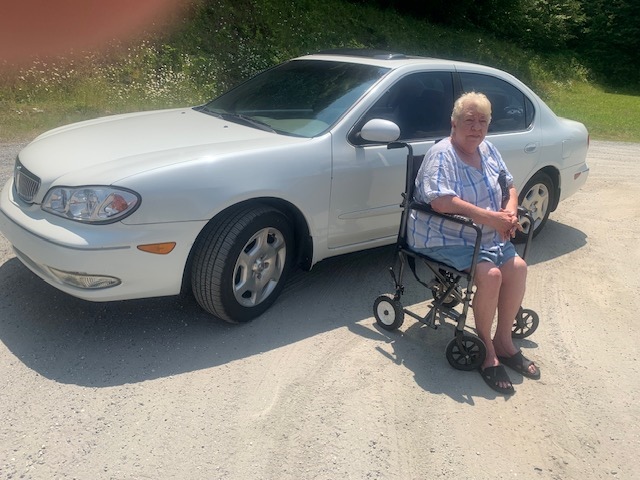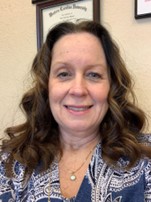
Helping One Actually Helps Many
Published: August 23, 2023
Podcasts are one of the most effective learning tools available to me these days. Whether driving, folding laundry, or tending my container garden – these become multi-tasking activities when the latest episode of my favorite podcast is simultaneously streaming in my earbuds. Imagine my surprise when I learned People I (Mostly) Admire would be discussing the subject of quantifying nonprofit impact metrics. With the podcast queued up and ready to play, I leashed up my dogs and headed out the door for a long walk.
Every nonprofit leader, staffer, and volunteer should listen to the heartbreak, resiliency, and brilliance of Reginald Dwayne Betts’ story. Not to give away too many details, I wanted to take a minute (or two) here to share my thoughts about what Mr. Betts said when asked how he convinces philanthropists to fund his cause, Freedom Reads, which so far has put 172 libraries in 34 prisons across the country.
“It’s often hard to accurately measure a nonprofit’s impact… It’s hard to know how many lives you’ve changed with books…” the interviewer said. “You’re a small organization, plus you’d want to wait five or 10 years to see what kind of impact that was having on people’s lives down the road.”
That statement alone stopped me in my tracks because it’s a conversation we have often here at Nantahala Health Foundation. Even without Mr. Betts’ response to chew on, the similarity between Freedom Reads and NHF was already striking. We both, like many nonprofits, struggle to quantify our impact. Like Freedom Reads, NHF has existed as a public nonprofit for only a short time. I was curious to learn Mr. Betts’ approach to the impact question.
His response was two-fold. First, he emphasized the financial requirements of his project by comparing the cost of the problem to the cost of his solution. What he said, in essence, was: “You – Mr. and Mrs. Philanthropist – should know that North Carolina spends more than $2.2 billion annually (as of 2019) to house 34K+ prisoners. Freedom Reads is only asking for $500,000 or $1M to give them books…Why would you balk at supplying a fraction of a fraction of a fraction of the problem cost, which might galvanize some real change that’s targeted at the person the prisoner will be when they leave prison?”

Citing figures alone, nonprofit fundraisers learn early in their career, rarely leads to significant donations. That’s why Mr. Betts followed his financial response with a personal story. Avoiding as many spoilers as possible, his journey started with his skin color and the prejudice he encountered because of it. Next, he was handed an eight-year prison sentence at age 16. The books he read and the education he received while in prison drastically diverted what he believed would be his pre-determined trajectory. About 10 years after leaving prison, he found himself wearing a cap and gown during Yale Law School’s graduation day. Would Mr. Betts be a lawyer today without prison? No, probably not. Would he recommend his path for other want-to-be lawyers? No, absolutely not.
His point was that when a nonprofit steps in to build a prison library or a homeless shelter or a food bank or a car-repair program or an affordable childcare center, lives are changed, and not just the life of the individual who receives direct services. Mr. Betts employs 11 people today, speaks to countless others, and has used his JD degree to help overturn wrongful convictions. When you think about a nonprofit’s ultimate impact, it’s nearly as impossible to quantify as the Butterfly Effect.

I began to consider how NHF might piggyback on Mr. Betts’ two-fold response to funders as a model for our discussions in the near future. I say ‘future’ because you may have noticed that we paused our grantmaking program this year. What you may not know is why. In a nutshell, we came out of the starting gate hot in 2019 by investing $1.47M in community nonprofits that were helping those in need in their own ways. Before the ink was dry on that stack of checks, COVID consumed us, as it did the rest of the world. We, like so many other
grant-makers, spent much of the next two years making reactionary decisions designed to save lives and revitalize our faltering economy.
As our community adjusts to what will be forever known as the post-COVID normal, we believe it is our responsibility in this, our fourth year, to revisit the conversation around community needs before paving our next path toward improved health and well-being. As of today, our new funding priorities cannot yet be labeled, though you can rest assured they will seek to bring together multiple resources to address an unmet need and begin to level the playing field for those who have consistently, even generationally, faced barriers to health. We are excited to share our vision with you soon. In return, we expect our community residents will work with us to achieve our goals and to invest in the work, thus leaving a better WNC to our children and grandchildren.
As Mr. Betts did, when Nantahala Health Foundation’s leadership sits down with potential donors, we will discuss the financials of our work, which boils down to the simple fact that healthy people require fewer of society’s limited resources than unhealthy people. In its most simplistic form, you might say, ‘An ounce of prevention is worth a pound of cure.’ For those who are financially inspired and understand the power of a positive bottom line, that may be enough.
For most, however, the inspiration to financially invest in the future health of others will come through the telling of personal stories. Since NHF does not offer direct-to-client services, we must highlight the stories our service-providing partners tell us about the lives changed as a result of our investments. Like the children who, during COVID’s most isolating days, were excelling at learning their multiplication tables, thanks to a supportive mentor we helped to employ at Clay County Community for Students. And the grandmother who, thanks to Rolling Start’s gift of a reliable vehicle paid for by our investment, is ensuring her grandchildren are getting to school on time and attending regular doctor appointments. And the homebound seniors who are enjoying the health benefits of fresh food and hot meals every day, thanks to the many food and nutrition programs we’ve invested in since our start.

Photo provided by Rolling Start
If a potential donor we are speaking with turns out to be deeply interested in ensuring that every Jackson County adult in need has access to a reliable vehicle, we will encourage that person to invest directly in Rolling Start. If, however, their desire to do good exists on a larger scale by addressing comprehensive needs in our region, we would hope they would write a check to Nantahala Health Foundation, thus giving us the increased ability to ensure partnerships, collaborations, and innovation strategically collide to create far-reaching, system-level change.
We appreciate your patience as our leadership team uses this time to be thoughtful about how best to invest our limited resources in pursuit of our goals. This process of carefully considering the potential for health improvements for all within the entirety of the nonprofit environment, with special attention being paid to gaps, is a major reason we are looking forward to speaking to donors who will have big dreams for our region and in our organization’s unique role making those dreams a reality.
If that sounds like you or someone you know, please contact us today to set up a meeting.

Post by Nantahala Health Foundation Associate Director Lisa Duff. Reach her at [email protected] or by phone at 828.634.1527
